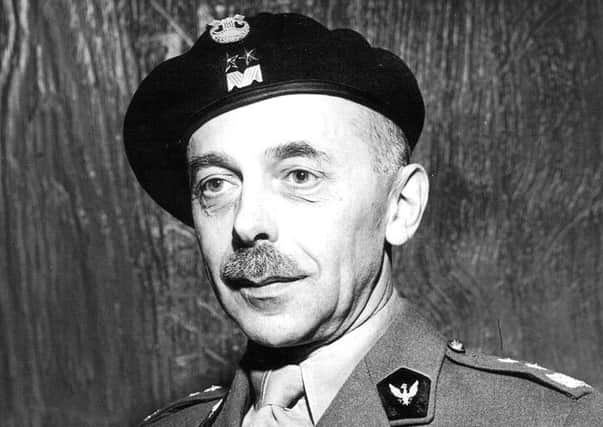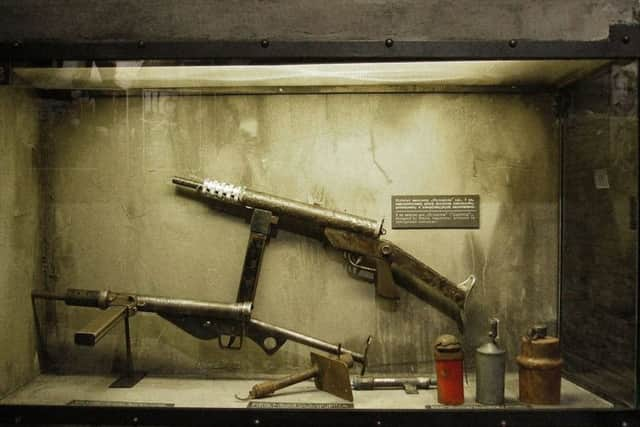Hugely courageous, but theWarsaw Uprising was doomed to costly failure


On August 1 1944 the approach of the Red Army prompted the Polish Home Army (Armia Krajowa in Polish), the largest resistance movement in Europe, anti-communist and loyal to the Polish government in exile in London, to rise up against the Nazi occupation and attempt to liberate the Polish capital.
The Warsaw Uprising was the largest single military operation undertaken by any European resistance movement during the Second World War. As Andrew Roberts has explained in ‘The Storm of War’: ‘The Poles understandably wanted to wrest control of their capital, and with it the sovereignty of their country, away from the Germans before the arrival of the Russians, who they correctly assumed had no more desire for genuine Polish independence than the Nazis. So while the uprising was aimed militarily against the Germans, it was also aimed politically against the Russians, something that Stalin well understood.’
Advertisement
Hide AdAdvertisement
Hide AdRoberts notes: ‘It is often assumed that the Russians stopped on the Vistula on August 7 for entirely political reasons, in order to allow the Germans to crush the Warsaw Uprising, but they had a good excuse to do so, for their 450-mile advance since June 22 had stretched their supplies and lines of communication to the limits.’


Richard Holmes has contended that the charge that the Soviets sat back and waited for the Germans to crush the uprising is baseless: there were four German armoured divisions between them and the city. Even if there is some truth in this, it is far from the full story.
Churchill pleaded with Stalin and Roosevelt to help the Poles but to no avail.
Without Soviet air clearance, Churchill authorised over 200 low-level supply drops by the RAF, the South African Air Force and the Polish Air Force (all under British command) from bases in Italy. On September 9 Stalin gave the US Army Air Force clearance to mount a single air drop on September 18 but when these supplies were dropped the part of Warsaw under Home Army control had shrunk so much that containers fell into German-occupied territory.
Advertisement
Hide AdAdvertisement
Hide AdThe Russians, despite their very close proximity to the city, did not lift a finger to help until September 13. Furthermore when Home Army detachments outside Warsaw tried to help their beleaguered colleagues they were disarmed by the Red Army. Therefore, it is substantially accurate to conclude that Stalin cynically stood aside to allow the Germans to crush the Poles because the elimination of the anti-communist Polish underground elite was advantageous to his plans for Poland as a Soviet satellite after the war.
The striking feature of the uprising was the impressive organisation of the Polish underground. Fire-fighting and anti-air attacks squads were organised.
Soup kitchens were set up, wells sunk and accommodation arranged for refugees and bomb victims. Newspapers were published, radio broadcasts transmitted and a postal service established. Hospitals and medical units worked efficiently.
Despite the horrendous living conditions, food shortages and the constant danger, the civilian population was loyal and uncomplaining and supportive.
Advertisement
Hide AdAdvertisement
Hide AdThis is evidenced by the fact that in early September, when the collapse of uprising seemed imminent, the Red Cross organised an evacuation and only 10% of the population opted to leave.
It was a horrendously unequal struggle. Well-equipped German troops confronted very lightly armed members of the Armia Krajowa. At the outset of the uprising only 14% of the Home Army was even armed, with only 108 machine guns, 844 sub-machine guns (600 of which were Błyskawica sub-machine guns designed and mass-produced covertly within Poland) and 1,386 rifles. Additional weaponry and ammunition was acquired from Allied air drops or captured from the Germans. Much of the fighting was waged with hand grenades and Molotov cocktails.
The fighting was bitter and unrelenting. Every street and every house was fought over. On September 21 Heinrich Himmler, the SS chief, claimed: ‘This is the fiercest of our battles since the start of the war. It compares to the street battles of Stalingrad.’
On October 2, after 63 days of fighting and with no prospect of external assistance, Bor Komorowski (General Tadeusz Komorowski ), the commander of the Home Army, had little option other than to surrender.
Advertisement
Hide AdAdvertisement
Hide AdDuring the uprising 15,200 members of the Home Army were killed and a further 7,000 were wounded. Between 200,000 and 250,000 civilians (out of a population of 1,000,000) also perished. German casualties were high too.
Perhaps 8,000 German soldiers were killed and a further 9,000 wounded.
The uprising resulted in the systematic destruction of 83% of the city by the Waffen SS. Himmler’s revenge on the Polish population was savage: almost 154,000 Polish men, women and children were sent to concentration camps.
Very few emerged from them alive.
In ‘Rising ’44: The Battle for Warsaw’ (2004), Norman Davies, the foremost British historian of Poland, observed that the Warsaw Uprising ‘engaged twice as many soldiers as did the attack on Arnhem; it lasted 10 times longer; and caused five times as many casualties. What is more, the fate of an Allied capital was at stake. And three times as many civilians were killed as in the entire London Blitz.’
Advertisement
Hide AdAdvertisement
Hide AdTwo years later in another book, ’Europe at War’, Davies compared the impact of the Warsaw Uprising with 9/11: ‘The losses – human and material – were 60 times as great as those in New York on September 11 2001. They resembled a World Trade Center disaster every day for two months.’
With the benefit of hindsight, we may sadly conclude that politically and militarily the Warsaw Uprising was a disaster but the courage and heroism of the members of the Home Army remain a source of justifiable pride to modern Poles. Poland’s tragedy was that with the end of the Second World War its people simply exchanged one tyranny for another.